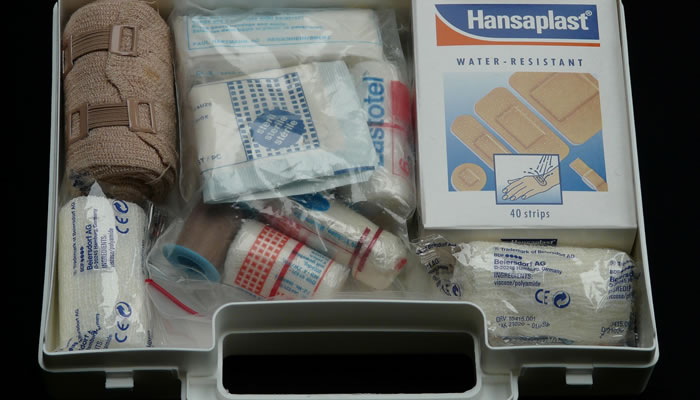I was recently talking to a friend about spring cleaning, and how – along with getting rid of the year’s build up – I needed to replace some of the items in my emergency bag. Her response was somewhat surprising, “you mean your bug-out bag? Those are for pessimists!” Maybe it’s being in the public adjuster business for so long… or maybe it’s my wiring, but to me being prepared is a source of calming my nerves, NOT “bugging-out”. And what about all those people who were strung out after a Florida hurricane? Many of them were unprepared.
I am aware that thinking about potential disaster can seem like all doom and gloom, but from the perspective of someone who deals with life’s not-so-pleasant surprises regularly, being prepared just makes sense. As they say, “life happens” and, unfortunately, that includes disasters. Therefore, being prepared with emergency supplies at home prepares you for home confinement or an evacuation. This assuages the initial shock, by providing you a ready-made first response available at your fingertips. And if you never have to use it (fingers crossed) it will give you peace of mind, knowing it’s stored away. Call it bug-out-bag insurance.
On board yet? Great, let’s start packing!
The specifics of your Emergency Supply Kit will be different for everyone depending on who they live with or care for, but the basic needs will remain the same so let’s start with them.
BASIC SUPPLIES:
- Food
- Water
- Tools and Equipment
- Personal Items
Now, let’s break it down. Keep in mind the needs of each family member when packing (your spouse or partner, children, elderly parents, guest boarders, and pets.)
FOOD:
- Enough food to last each family member for at least three (3) days
- Include canned foods whose expiration date is at least a year from your packing date. (Note: You can also purchase Meals Ready to Eat (MRE) on line or at local army surplus stores.)
- Pack non-canned foods in sealed metal or hard plastic containers.
- Be sure to include food for infants and family members with special dietary needs.
- A self-contained heating device (Sterno brand, or other brands.)
WATER:
- Pack at least one (1) gallon of water per person, per day, for at least three (3) days
- Store in air-tight plastic storage containers.
- Be aware of expiration dates on water as well – bottled water does, in fact, go bad.
TOOLS & EQUIPMENT:
- Generator, and four day supply of fuel (if feasible.)
- Battery-powered radio
- Pre-paid cell phone
- Cell phone charger
- LED flashlights
- A supply of spare batteries for radio and flashlights – keep aware of expiration dates.
- Resealable plastic bags
- Plastic dining-ware
- Manual can opener
- Heavy duty plastic garbage bags
- Tea-light candles
- Candle lighters (matches, cigarette lighters)
- Blankets and sleeping bags.
- Tent, if practical
- Computer, stored with battery charger
- Diapers and wipes for those who need (babies, toddlers, and incontinent adults.)
- Thick rope
- Two (2) sharpened, high-quality knives
- A COMPLETE FIRST AID KIT
PERSONAL ITEMS:
- Keep your insurance policies, birth certificates, household inventory, bank account information and other important documents stored in a water tight and fire safe container.
- Extra car and household keys
- Cash – small bills are preferable – separated out into several envelopes to discourage theft of the entire amount.
- Prescriptions
- Washcloths, towels and soap
- Personal sanitary items
- A complete change of clothing, with shoes, for each family member.
Assembling the supplies you might need in case of a disaster is an important part of your basic emergency plan. Remember to keep your kits in working order by changing the food, water and expiration dates.
If you have children, ask them to think of items that they would like to include in their own Disaster Supplies Kit, such as favorite toys, books, games and non-perishable food items.
A Note about Pets: Pets should not be left behind during a disaster. However, most evacuation shelters do not allow pets (with the exception of service animals). Create an emergency preparedness kit for your pet as you would for each family member.
- Attach ID to each pet – their name, your name, and your contact info.
- A stable, sanitary environment with five days’ food supply
- Keep a list handy of pet shelters and hotels that accept pets
For more information on Emergency Preparedness, check out our free, downloadable Emergency Preparedness Guide.




